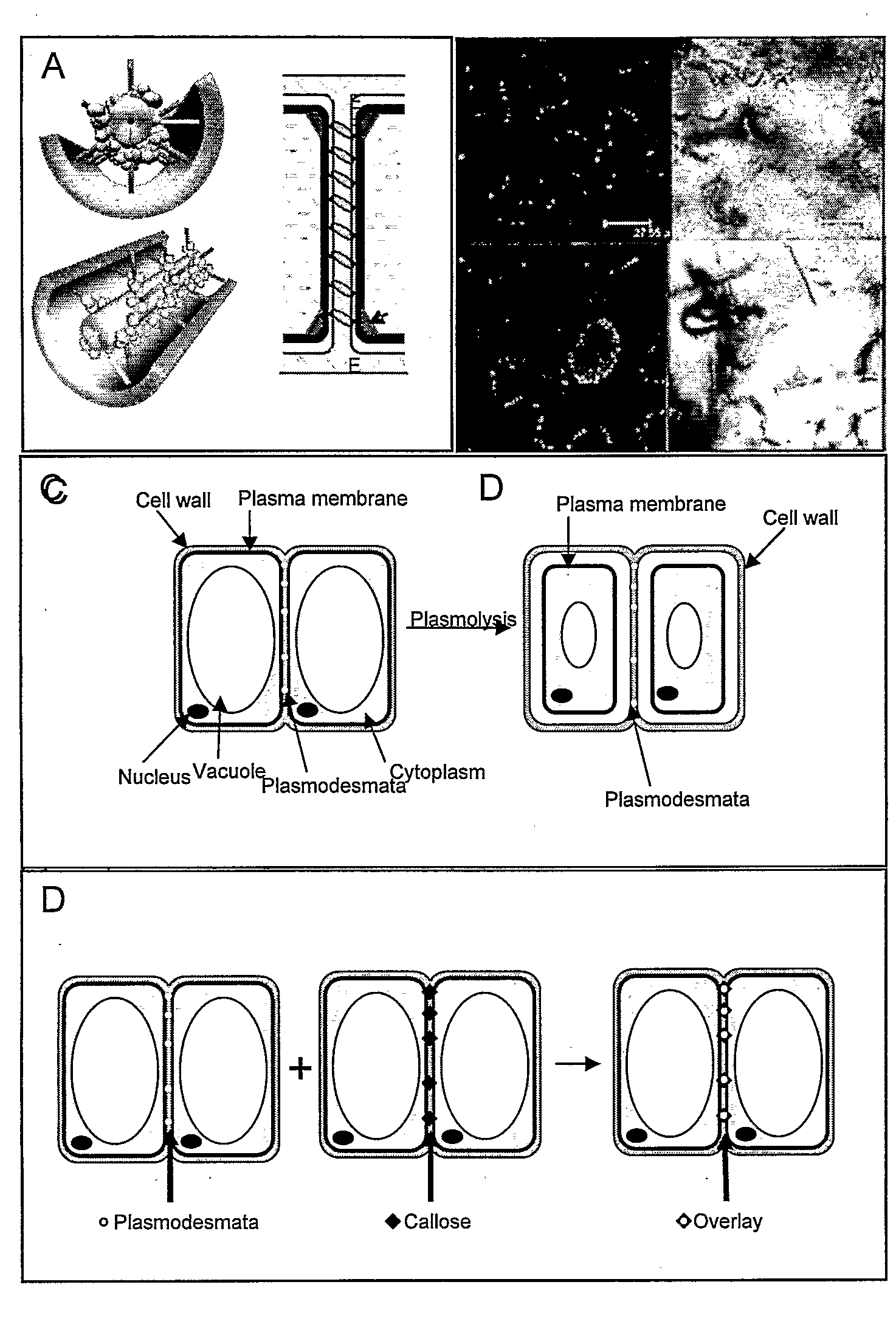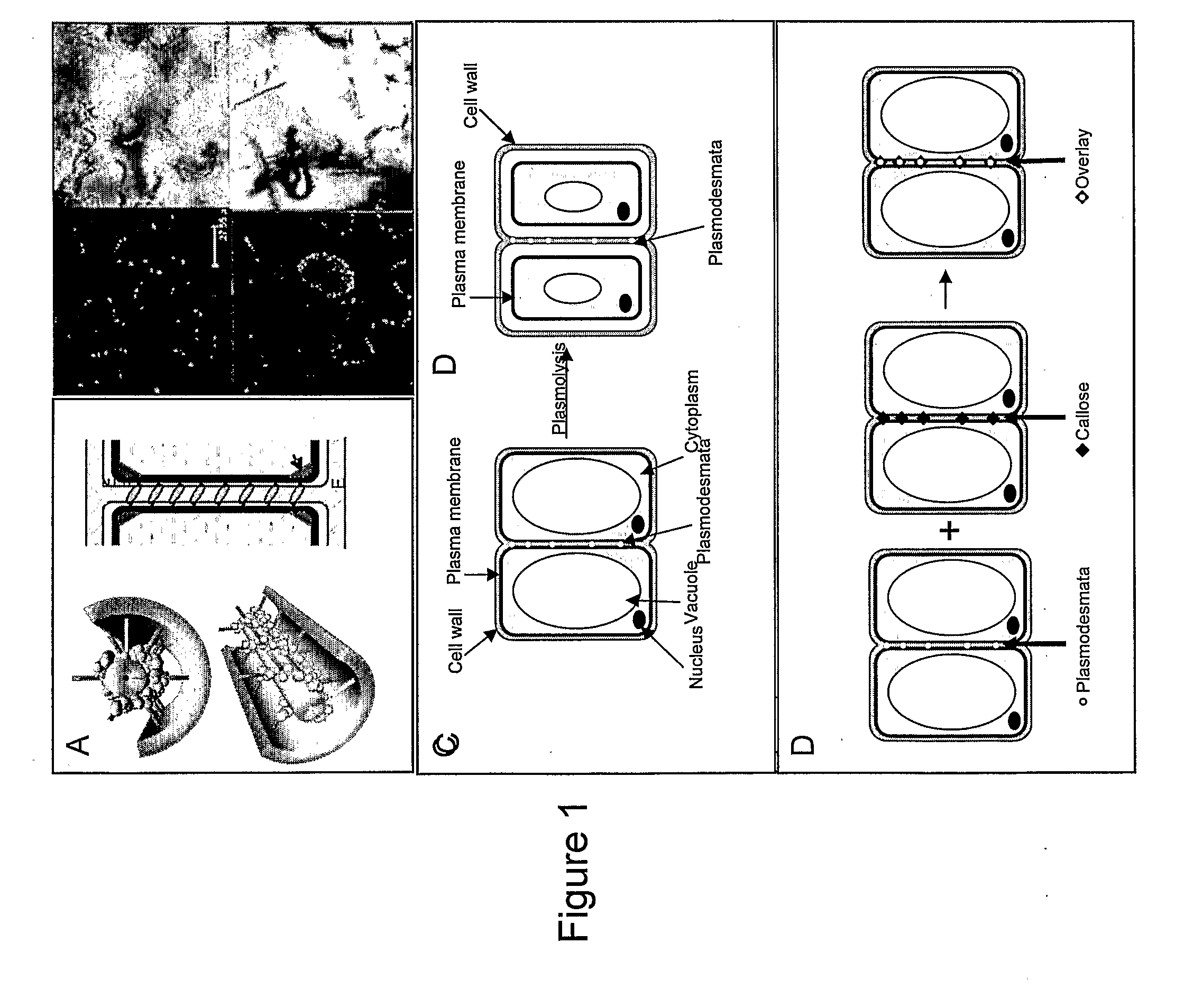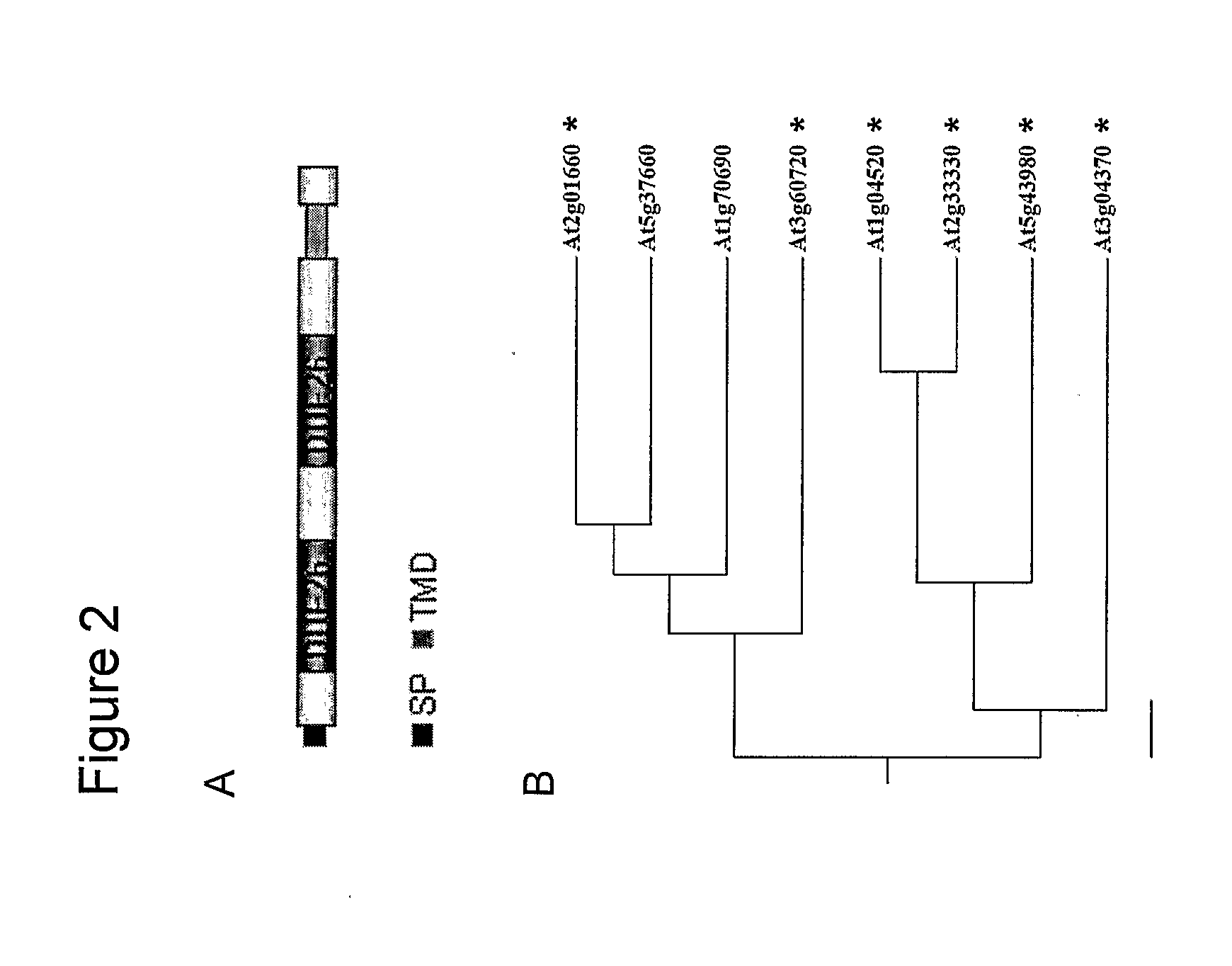Compositions and methods relating to cellular targeting
a technology of cellular targeting and composition, applied in the field of cellular targeting, can solve problems such as solving the modus operandi of cells
- Summary
- Abstract
- Description
- Claims
- Application Information
AI Technical Summary
Problems solved by technology
Method used
Image
Examples
example 1
Gateway Cloning of Pdlp1
[0109]Gateway technology (Invitrogen) was used to generate all the clones in this disclosure. Pdlp gene specific sequences were amplified by PCR using Phusion DNA polymerase (NEB). Gene sequences were engineered to carry partial attB sites on either end. After purification, full length attB sites were reconstituted by an additional round of PCR using attB adaptor primers. The resulting DNA fragment was purified and transferred by recombination into the entry vector pDONR207 (Invitrogen) using BP clonase II (Invitrogen) following the manufacturers conditions. The sequence of the resulting pDONR clone was verified using BIG Dye 3. The Pdlp sequence was transferred by recombination to the indicated binary destination vector using LR clonase II (Invitrogen) following the manufacturers conditions.
example 2
Cloning of Pdlp1 Family CDS
[0110]Primers were designed to the 5′ and 3′ ends of the appropriate coding sequences (CDS). The 5′ primer included a partial attB1 site, a Kozak sequence and the ATG of the CDS. The 3′ primer was missing the termination codon and included a partial attB2 site. The CDS was PCR amplified, using Phusion DNA polymerase (NEB) from a pool of cDNA made from Arabidopsis Columbia RNA. Gateway cloning was used to transfer the Pdlp CDS into the entry vector pDONR207 (Invitrogen). The Pdlp CDS in the resulting pDONR-Pdlp clone was transferred by recombination to the binary destination vector pB7FW2.0 (29). Agrobacterium GV3101 was transform via electroporation with the resulting binary clone. Transformed GV3101 was used for transient and transgenic expression of Pdlp CDSs.
example 3
Cloning of Pdlp 1 Promoter Construct
[0111]Primers were designed to a region 1.5 Kb upstream of the ATG of Pdlp1 and to the 3′ end of Pdlp1. The 5′ primer contained a partial attB1 site, the 3′ primer was missing the termination codon and included 19 nt of eGFP sequence. The promoter plus CDS was amplified using Phusion DNA polymerase. eGFP was PCR amplified using primers to the 5′ end and a 3′primer carrying a stop codon plus a partial attB2 site. Both the eGFP and Pdlp1 DNA fragments were purified and joined by overlap PCR using attB adaptors to reconstitute the attB sites. Gateway technology was used to recombine the resulting 3.6 Kbp fragment into the entry vector pDONR207 (Invitrogen) and transfer it to the binary destination vector pEarleygate 301 (30). Agrobacterium GV3101 was transformed by electroporation with the resulting binary clone and was used for Arabidopsis transformation.
PUM
| Property | Measurement | Unit |
|---|---|---|
| Fraction | aaaaa | aaaaa |
Abstract
Description
Claims
Application Information
 Login to View More
Login to View More - R&D
- Intellectual Property
- Life Sciences
- Materials
- Tech Scout
- Unparalleled Data Quality
- Higher Quality Content
- 60% Fewer Hallucinations
Browse by: Latest US Patents, China's latest patents, Technical Efficacy Thesaurus, Application Domain, Technology Topic, Popular Technical Reports.
© 2025 PatSnap. All rights reserved.Legal|Privacy policy|Modern Slavery Act Transparency Statement|Sitemap|About US| Contact US: help@patsnap.com



